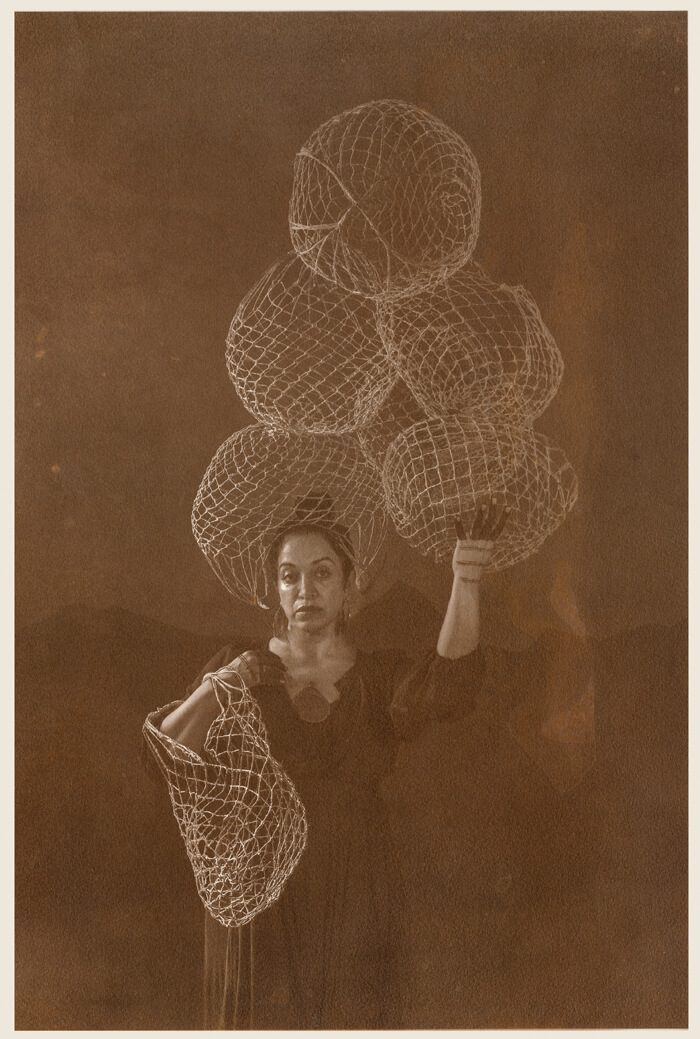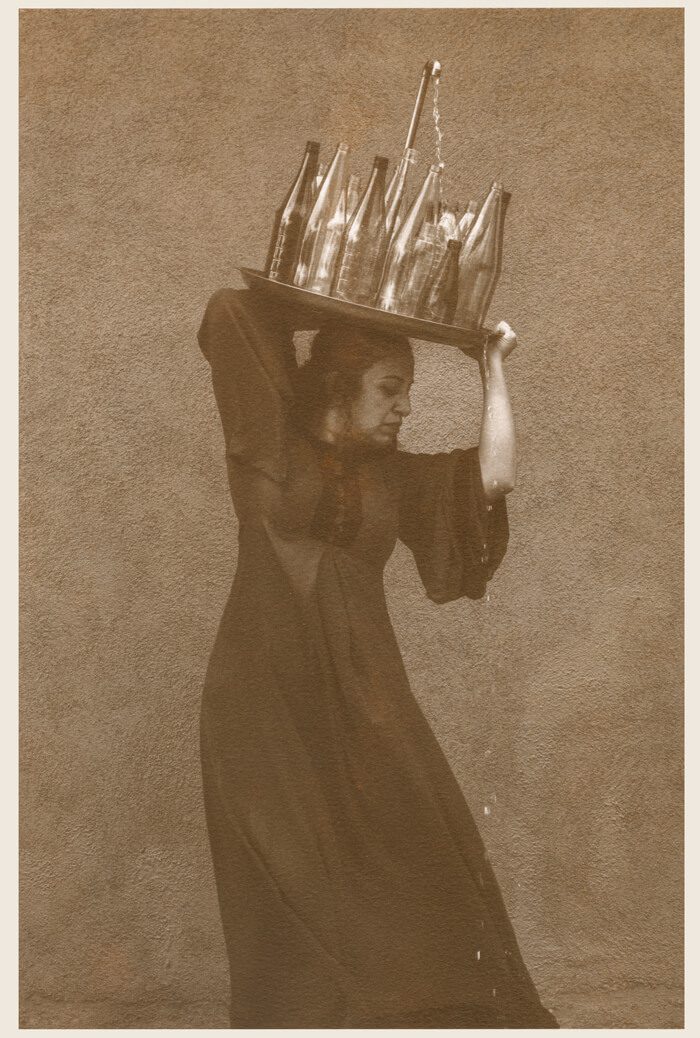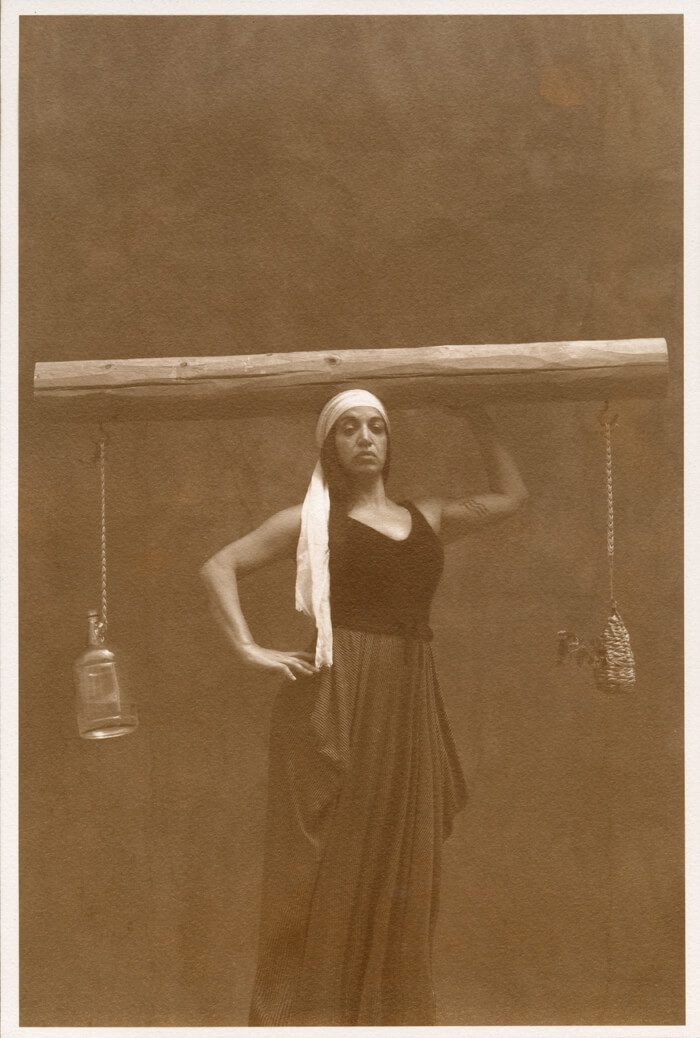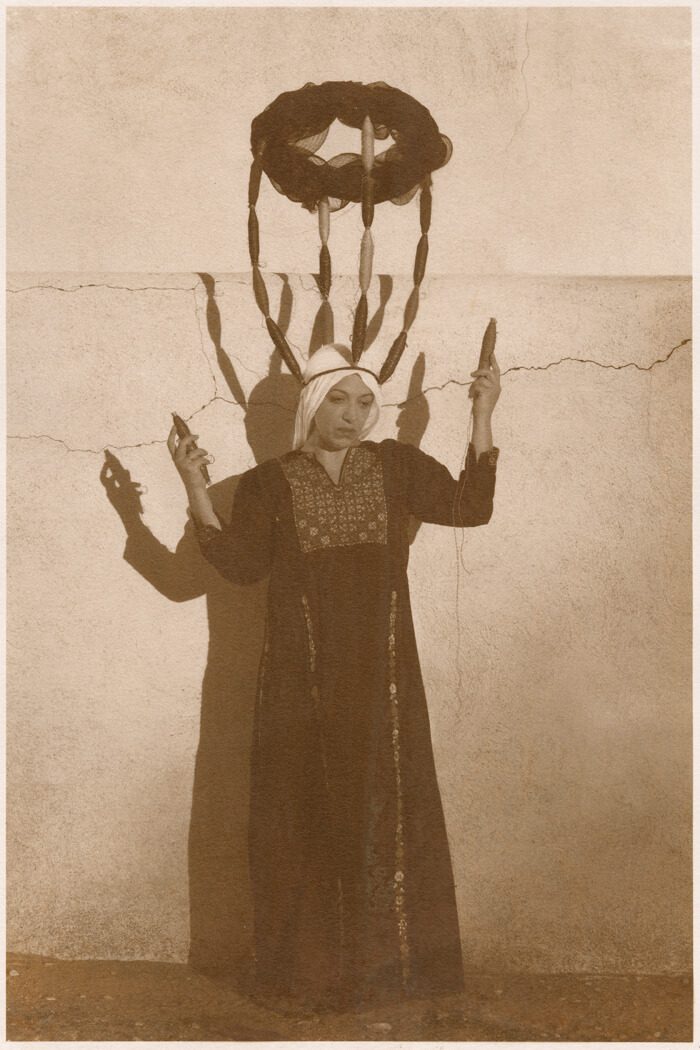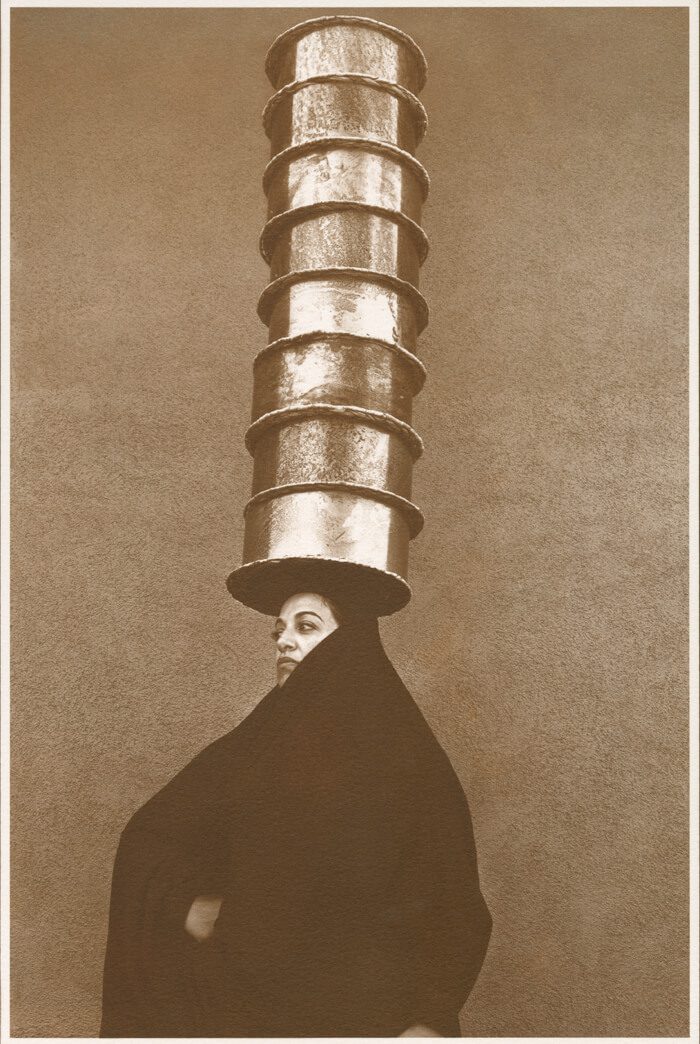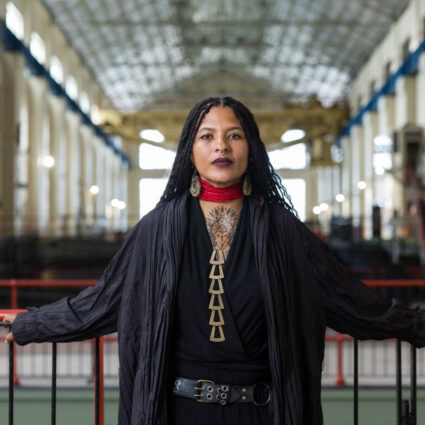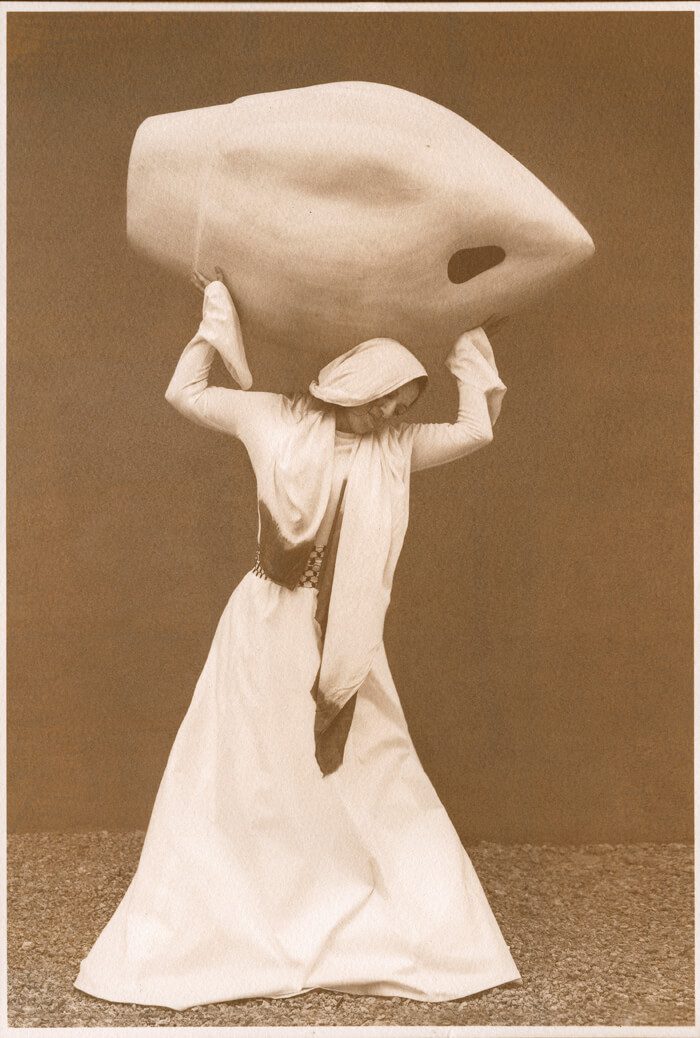
Sama Alshaibi, a Tucson, Arizona–based photographer, is a Palestinian-Iraqi who originally came to the United States as a refugee from Iraq. Her mother’s family are also refugees from Jaffa, a historic port city that was fought over and ultimately became part of Israel in 1948. The families that lived there were forced to leave quickly, and many left behind family keepsakes such as family photo albums. Alshaibi’s family have few photographs from their time in Palestine.
Alshaibi became interested in photography at an early age and studied the medium in college. It was at this early age that she began using her body as a subject. Although she did not fully comprehend why, she knew that her body represented something more complex than a figure. In graduate school, just after 9/11, the response to her photographs was filtered through stereotypes of Arab women and conversations often turned to hijabs and burkas. This response prompted successive projects that responded to issues of identity, gender, migration, and war.
In Alshaibi’s most recent work-in-progress, Carry Over, she explores the roots of stereotypes around Arab women. The project is based on historical images from the late nineteenth and early twentieth centuries that often featured lounging female figures draped in ornate textiles and stylized with obligatory props, such as water vessels. These pictures painted an exoticized idea of the Middle East for a Western European audience, and many were used on postcards and widely distributed. The figures in these historical images were not portraits of individual women but rather representations of the Western idea of the “Orient.” These photographs contributed to many misconceptions around the Middle East and specifically Arab women that still persist.
The images in Carry Over replicate these historical images in complex ways; each features a female figure wearing costumes and posing with a symbolic prop. The props are larger than life, and the figure is the artist herself. Alshaibi uses the same albumen printing process as the historical images, further connecting the historical with the contemporary. In one image, Gamer, a female figure draped in black carries a large stack of cylindrical tin objects upon her head. Alshaibi explains that these tins reference a specific kind of women’s work in Iraq in which they would deliver fresh buffalo cream (called gamer) and bread for breakfast. This type of work has largely disappeared in the region due to war and politics. Alshaibi’s images bring attention to various kinds of contemporary hardship women face and to their individuality.
The historical photographs that inspired Carry Over showed women who were isolated, not working, and not participating in the public sphere. They perpetuated ideas that covered women were oppressed women. Alshaibi’s photos show women who are burdened (physically and metaphorically) yet claim their individuality and identity, which is more complicated than what a first glance might reveal.
